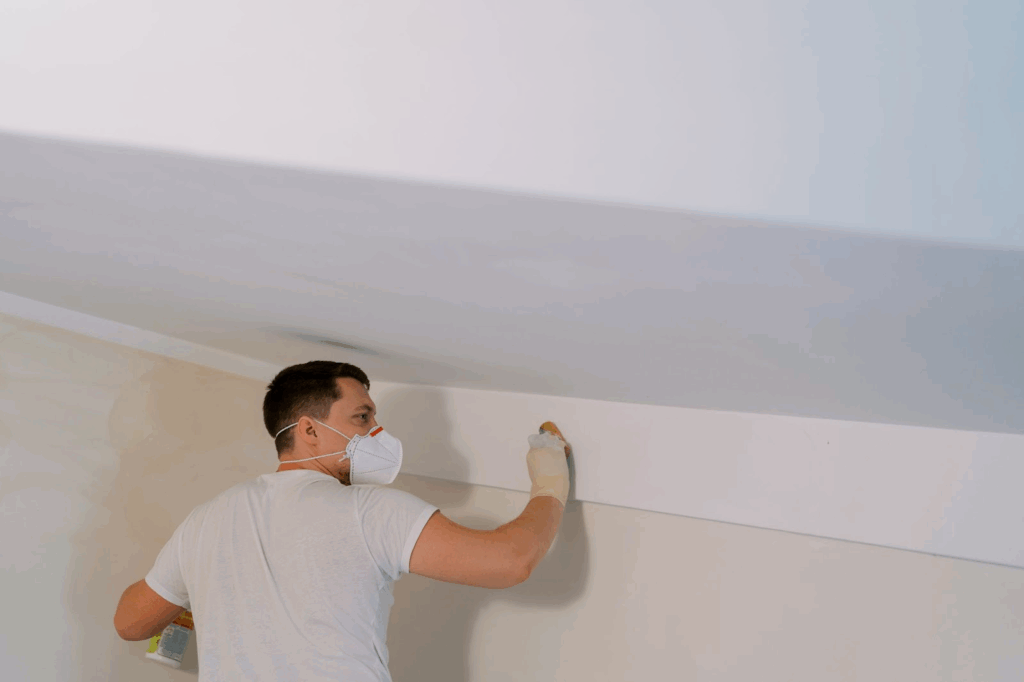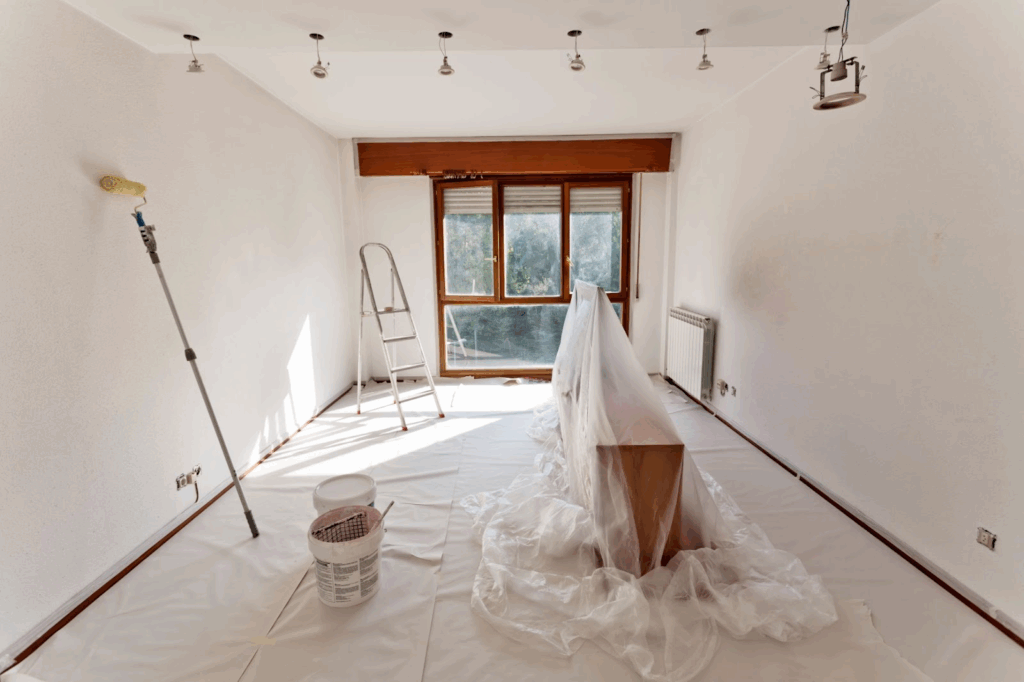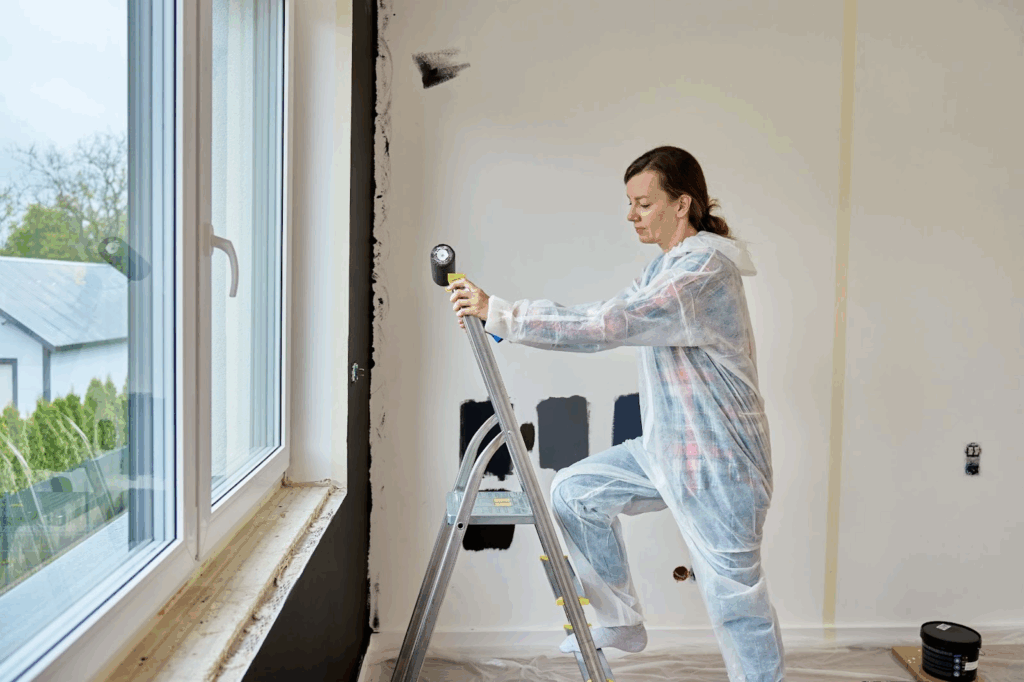
Fresh paint brings an instant lift to any room or building. The colors appear vibrant, the walls look polished, and the space feels renewed. Yet, painting services involve more than applying coats of paint and walking away. What follows, cleanup, drying, and touch-ups, determines how smooth and lasting the results will be.
Why Understanding Post-Painting Services Matters
Knowing what to expect after painting services gives homeowners peace of mind and prevents costly mistakes. Many assume the job ends when the last brushstroke dries, but cleanup, drying, and touch-ups make a lasting difference. Understanding these steps prepares clients to protect their fresh paint and spot imperfections early. This awareness ensures the results stay vibrant and durable long after the project ends.
What to Expect After Painting Services
A freshly painted room may look finished, but the work is incomplete once the brushes are set aside. The following period determines how clean, smooth, and long-lasting the results will be. From clearing away protective coverings to watching paint cure, every step has an impact. Knowing what comes next helps homeowners enjoy their investment’s beauty and durability.
Post-Painting Services Cleanup
Cleanup after painting services means removing every project trace so the space feels livable again. Professional painters know that clean surroundings highlight the quality of their work. They carefully remove protective coverings, clear drips, and refresh the air. This final step leaves the space safe, polished, and ready for daily use.
Removing Protective Materials and Tape
Painters begin cleanup by removing the coverings that shielded furniture, floors, and trim. Drop cloths, masking tape, and plastic sheets are removed steadily to prevent damage. Pulling tape at the wrong angle can peel away fresh paint, so experts work carefully to keep edges neat. Any sticky residue is wiped off immediately to avoid dust sticking later. This step brings out the clean, sharp lines around walls and trim.
Cleaning Paint Drips and Smudges
No paint job is flawless without checking for drips and smudges. Painters scan the area closely for stray marks on walls, floors, or fixtures. Wet drips are quickly dabbed or wiped, while dried ones are gently scraped with the right tools. Professionals correct even the most minor imperfections so the final finish looks seamless. This process prevents eyesores that stand out long after the work is done.
Dusting and Ventilating the Room
Freshly painted areas often carry dust from sanding and lingering odors. Professional crews dust baseboards, sills, and corners to restore a clean surface. They also ventilate the room with open windows or fans to remove paint fumes. Good airflow speeds up drying while keeping the environment healthy. This combination of cleaning and air circulation prepares the space for comfortable use.
Drying Process After a Fresh Paint Job
Drying is an essential stage in any interior painting project. It defines how smooth the finish will look and how long the paint will last. Rushing this phase can cause smudges, peeling, or uneven wall textures. Professional guidance ensures the paint cures properly and holds up to daily wear.
Typical Drying Timelines for Paints
Paint drying times vary depending on the product used. Water-based paints often dry to the touch within a few hours, but oil-based formulas may take a whole day. Being dry to the touch does not mean the paint is cured. Complete curing can take several days to weeks, depending on the surface type. Professionals explain these differences to help clients avoid unnecessary mistakes.
Factors That Affect Drying Speed
Several conditions influence how quickly paint dries. Warm temperatures encourage faster evaporation, while colder weather slows progress. High humidity in the air keeps paint tacky for extended periods. Thick applications also take more time compared to thin layers. Adequate airflow balances these factors for interior projects, while exterior painting requires careful timing to avoid rain, wind, or direct sun that can compromise results.

Protecting Wet Paint from Smudges
If left unprotected, wet paint attracts accidents. Children and pets may brush against walls, leaving marks that need correction. Furniture placed too soon can stick or scrape against soft surfaces. Dust settling on damp paint dulls the finish and reduces its smoothness. Avoiding contact during this stage prevents unnecessary touch-ups later.
Signs That Paint Has Cured
A fully cured wall looks and feels different from a dry one. When touched lightly, cured paint resists scratches. The surface feels harder and carries its final level of sheen. Fingerprints no longer appear easily on the paint. These signs help homeowners know when it is safe to use the space normally again.
Touch-Ups Following Painting
Touch-ups are the final refinements that turn good painting services into excellent results. Even with precision, minor flaws may appear once the paint settles. Light can reveal streaks or uneven coverage that is not visible during application. Professionals address these quickly to keep the walls consistent and polished.
Identifying Flaws After Paint Dries
Once the walls dry thoroughly, minor imperfections become easier to see. Bright lighting or natural sunlight often highlights streaks and roller marks. Dry paint can also reveal patchy coverage or tiny bubbles. A professional checks walls from different angles to spot these flaws. This inspection guide shows where touch-ups are necessary for a uniform finish.
Common Touch-Up Methods
Several techniques ensure that touch-ups blend seamlessly with existing paint. Feathering blends the edges of a corrected spot into the surrounding area. Sanding smooths rough patches before applying a fresh coat. Painters also use leftover paint from the same batch to maintain color accuracy. Using the right brush or roller ensures that the fix does not stand out.
Tools for Effective Corrections
Professional painters rely on the right tools for touch-ups. Small angled brushes handle corners and detailed trim. Rollers help correct larger patches while avoiding texture differences. Some use sponges for soft blending where roller lines appear. Clean tools are essential for a smooth application. The choice of tool depends on the flaw’s surface and size.
When Clients Should Request Service
Sometimes imperfections become visible only after painters leave. Many companies provide guarantees or return policies for corrections. Clients should contact their painters within the agreed time if they spot issues. Clear communication about what looks incomplete helps resolve concerns quickly. Requesting touch-ups ensures the final result matches expectations.

Homeowner Tips After Painting Services
Homeowners play an essential role in protecting fresh paint after the job ends. Simple practices help walls cure adequately and stay attractive longer. Waiting, cleaning carefully, and monitoring for damage all contribute to lasting results. These actions complement the painter’s work and extend the paint’s life.
Wait to Move Furniture Back
Moving furniture too soon can ruin freshly painted walls. Sofas and chairs may scrape against soft surfaces and leave marks. Experts recommend waiting at least two days before rearranging rooms. Furniture legs should have felt pads to avoid scratches on trim and baseboards. Careful handling keeps both walls and furnishings safe from harm.
Clean Newly Painted Walls
Fresh paint remains delicate for several weeks. During this period, harsh scrubbing can damage the finish or dull its sheen. A soft cloth works best for dusting surfaces during curing. After curing, mild soap and water clean walls safely without fading the color. Avoiding harsh cleaners preserves the look for years to come.
Monitor for Small Repairs Over Time
Even the best paint jobs experience wear with time. Chips, scratches, and scuffs are standard in high-traffic areas. Keeping leftover paint allows homeowners to make minor touch-ups themselves. Regular checks keep walls looking fresh and prevent minor damage from spreading. For larger concerns, professional painters can restore the original finish.
Why Professional Painting Services Stand Out
Professional painting services go beyond applying color to walls. Their value shows in cleanup, careful drying guidance, and thorough touch-ups. These finishing steps guarantee the paint looks polished and lasts longer. A trusted painter considers this part of the complete service.
They Deliver a Safe, Ready Space
Professionals leave rooms free of debris, coverings, and paint residue. They improve air quality by ventilating freshly painted areas. Homeowners return to a safe and comfortable space. Cleanup reflects the same care given to painting itself. A ready-to-use room strengthens the impression of quality.
They Build Trust Through Detail
Trust grows when painters handle every detail responsibly. Homeowners notice when minor flaws are corrected without complaint. A company that values accuracy shows reliability and professionalism. This attention leads to stronger customer relationships. This level of detail in commercial painting is even more vital, since businesses rely on polished finishes that reflect their brand image and withstand daily use.
They Extend the Life of Paint
Longevity depends on how well the final stages are managed. Proper drying prevents peeling or cracking later. Early touch-ups stop minor problems from becoming larger issues. Clean, even finishes resist fading and wear longer. Quality work provides value years after the project ends.
Trust Painting Services Beyond the Brushwork
A flawless paint job is remembered for its fresh color and how well it holds up over time. Cleanup, drying, and touch-ups decide whether your walls keep that just-painted look or fade quickly. Choosing painting services that treat these final stages with the same care as the first stroke protects your investment and peace of mind. Trust the professionals who understand that true craftsmanship continues long after the brushes are set aside.
For guidance beyond the brush, visit the Euro Painting blog and discover how professionals refine spaces with detail and precision.

